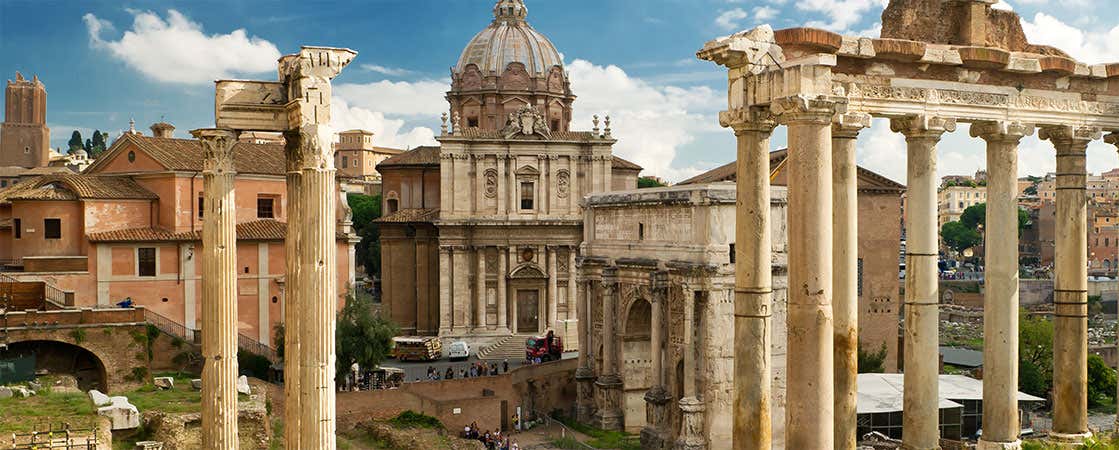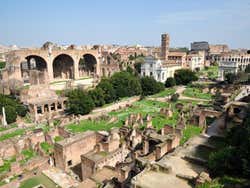
The Monarchy (753 BC - 509 BC)
Discover the State of Rome’s first political model, which was a monarchical form of government, from 753 BC until 509 BC.
The most accepted date for the foundation of Rome is 753 BC. The first form of government in Rome was monarchical according to the archaeological findings and the legends.
In the excavations carried out in the Roman Forum, in the Regia, which was the former royal residence, a glass of bucchero was found dating from the 7th century BC with the inscription Rex (king). The word regei was also found on the Lapis Niger, an ancient shrine in the Roman Forum. An inscription found beneath the black marble is considered to be a law.
It's also possible to figure out when Rome was a kingdom thanks to other institutions in the Lazio region. For example, the rex Nemorensis (king of the forest), a priest of the goddess Diana who looked after the forests from the 6th century BC until the Roman Empire.
Curiously, the Romans would maintain the same institutions throughout the centuries, transforming the roles of those in charge to suit the period. In this case, during the Roman Republic, the figure of the rex sacrorum (king of the sacred) substituted the king figure but was only given religious functions.
Romulus, son of the god of war and the daughter of the king Numitor, was the first king of Rome and also its founder, thus the city was called after him. He formed the Roman Senate with one hundred men and gave the inhabitants of Rome a body of laws.
The Growth of Rome
After founding the city, Romulus invited merchants and men of all kinds to settle in Palatine Hill. To increase the female population and give Rome’s inhabitants wives, he abducted Sabine women. As a consequence, the Sabine King, Titus Tatius attacked Rome and took the Capitol. Finally, Romulus shared the kingship of the city with Titus Tatius until his death.
The list of the 7 kings of Rome, or 8 if we include Titus Tatius, is as follows: Romulus, Numa Pompilius, Tullus Hostilius, Ancus Marcius, Tarquinius Priscus, Servius Tullius, Tarquinius Superbus. No historian doubts the existence of the last 3 kings, since there is clear evidence of their reigns in Rome. Nowadays, it's also believed that the first 3 kings of Rome also existed.
Certain historians argue that the name of these 7 kings dates back to when the first Roman historians, in the 3rd century BC, wrote about the origins of Rome, which would confirm them to be true.



